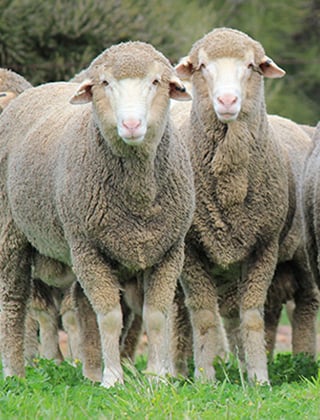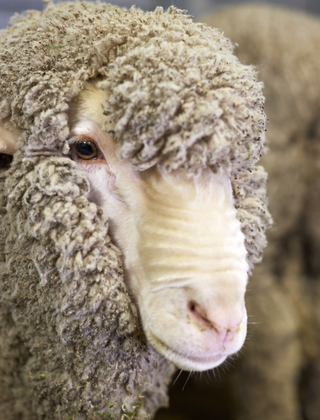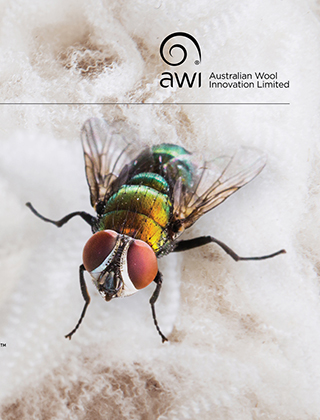Breeding productive, naturally flystrike resistant Merinos – Rules of thumb

AWI is often asked: “I know you have done R&D into breeding for breech strike resistance, and I get that it can get a bit complicated, but can you just give me some quick dot points?” Yes, yes and yes. Here are some rules of thumb, but because flystrike is complicated, each might need massaging for some sheep types, in some environments.
AWI is often asked: “I know you have done R&D into breeding for breech strike resistance, and I get that it can get a bit complicated, but can you just give me some quick dot points?” Yes, yes and yes. Here are some rules of thumb, but because flystrike is complicated, each might need massaging for some sheep types, in some environments.
General
- Cull struck animals.
- Have a breeding objective, set production targets, and monitor progress. This can be via raw wool and reproduction measures, target visual scores or average ASBVs.
- Get your breeding objective right for the future, stick to it, don’t chase fads.
- Don’t overly complicate your breeding objective, keep it as simple as possible.
- It is important to balance the key traits that are in a performance index with those not in an index.
- The larger the number of traits in your breeding objective, the larger the number of non-visual traits and the larger the number of antagonistic traits (traits that work against each other), the more likely quality ASBVs and indexes will assist progress.
- Choose a ram source that has a similar breeding objective, similar environment and condition score targets. Choose a sheep classer and agents to match.
- If you run high, medium or low stocking rates, buy rams from breeders who have a similar outlook.
- Have as few management groups as possible and large numbers in management groups; it leads to better results for both visual and objective assessments. If not, good linkage between management groups is critical for ASBVs.
- A five-week, or less, joining is an important management and genetic evaluation tool.
- Transparency rules; tell the supply chain your story, put your business up on Wool Q and let ram buyers and wool buyers know your story.
Breech strike
- To reduce the risk of breech strike to moderate levels, every sheep needs to be 2 score or less for breech wrinkle, 2 score or less for dags and urine stain and 3 score or less for breech cover, during the months when there is a risk of strike.
- The lower the scores the lower the risk.
- Wrinkle is the most important trait to reduce first. Dags are a higher risk factor but they are much more difficult to manage on high breech wrinkle sheep and more difficult to make progress on. A well timed crutch or bunghole may mean you can take some pressure off inherited ‘dags’.
- Wrinkle and fleece weight are traits that can be visually assessed. Good progress can be made without ASBVs and monitored over time.
- Similar to dag, if you are in a low dag environment, selecting to reduce dags reduces selection pressure on more important traits as it is difficult to find the top sires and ewes for low dags; you are better off putting more pressure on other traits.
- If you are in a low worm environment, selecting to reduce worms reduces selection pressure on more important traits as it is difficult to find the top sires and ewes for low worms; you are better off putting more pressure on other traits.
- High fertile sheep can make up for lower fleece weights and still have high index performance, but low wrinkle does not automatically result in high reproduction.
- Particularly for early maturing, low wrinkle Merino types, be careful of ‘inflated’ Post Weaner or Yearling fleece weights. Request your ram breeder to display hogget or adult age fleece weight, as adult performance can be relatively much lower. This older data is obtained from their retained sires, ewes and progeny testing. Keep checking the ASBVs of your previously purchased rams; they are updated every two weeks as more data is obtained on their relatives.
- Target ASBVs for wrinkle, fleece weight and index depends on your target fibre diameter and preferred Merino type. R&D shows that in all types, progress can be made to both reduce wrinkle and strike and increase fleece weight and indexes, but it is easier to meet aggressive targets with SA – WA Merino types and progressively more difficult at lower microns.
- While many NM growers don’t want ‘high adult fleece weight for micron’ types, they still don’t have to be low fleece weight animals.
- The target ASBV for breech wrinkle, in high wrinkle country is minus 0.9, moderate wrinkle country minus 0.6 and low wrinkle country minus 0.3, to produce all progeny 2 or less for wrinkle score.
- The target ASBV for dag in high and moderate dag country is minus 0.4. In low dag country, avoid high dag animals >0.2.
- But every 0.1 reduction in wrinkle and dags reduces reliance on mulesing, chemicals and crutching, and over time significant progress can be made towards highly profitable naturally flystrike resistant animals.
- Breeding for profitable natural breech strike resistance without increased reliance on chemicals so that mulesing can cease, can take a few years for some sheep types in some climates, but several decades for other sheep types in high-risk regions.
Poll strike
- Select for polled animals.
- If you prefer horned animals, select for a wide distance between the horn sites on the poll and good clearance from the eyes and jaw.
Body strike
- Select for low wool colour and low fleece rot (AMSEA site reports list these traits).
- Minimise the risks of dermatitis (or lumpy wool) by good dip and shearing board hygiene.
- Minimise handling animals when they are wet on the skin.
- A lower fibre diameter and fibre diameter variation helps reduce the risk of body strike.
More information: Contact AWI Program Manager Genetics and Animal Welfare Advocacy, Geoff Lindon, at Geoff.Lindon@wool.com















